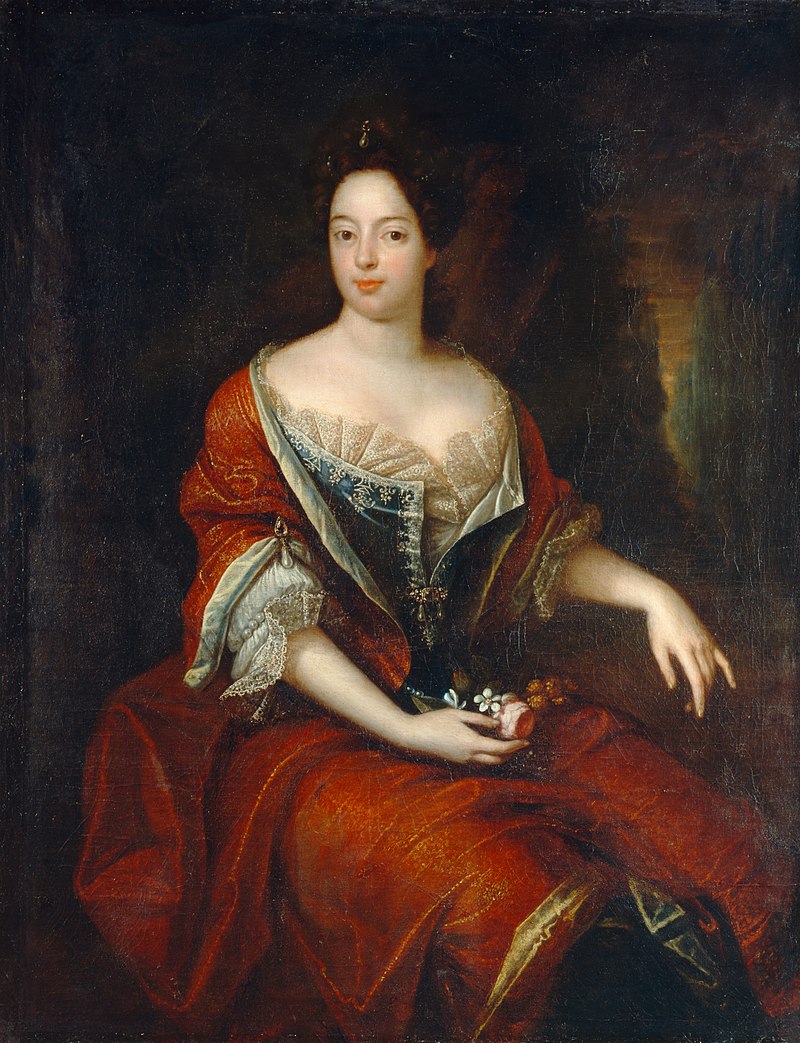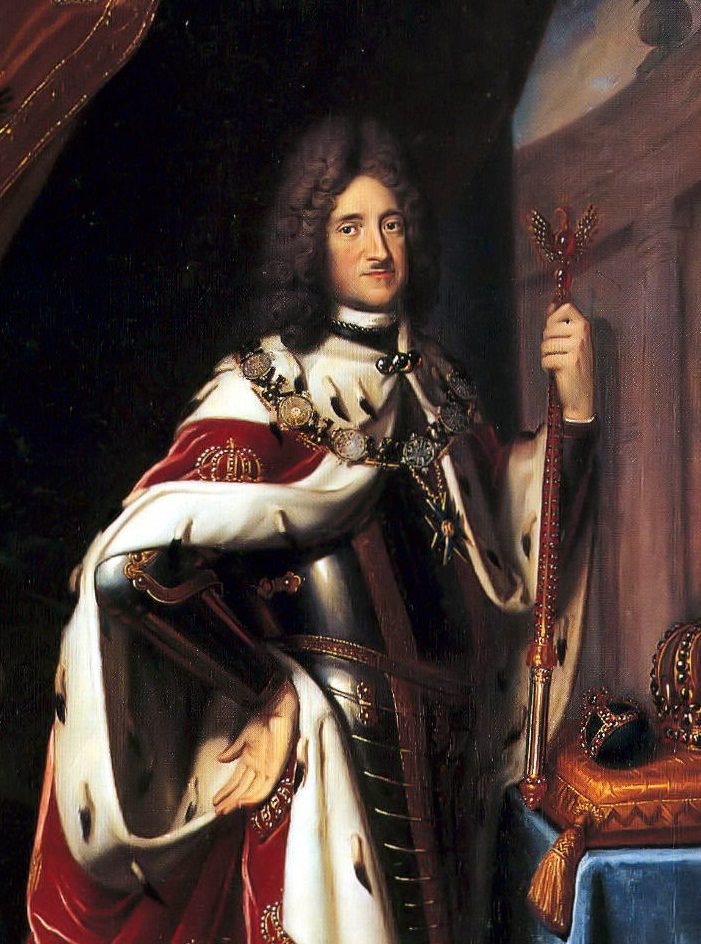by Scott Mehl © Unofficial Royalty 2019

Sophie Charlotte of Hanover, Queen in Prussia; Credit – Wikipedia
Sophie Charlotte of Hanover was the second wife of King Friedrich I in Prussia, and the first Queen in Prussia. She was born at Iburg Castle in Osnabrück, Electorate of Brunswick-Lüneburg, later in the Electorate of Hanover, now in Lower Saxony, Germany, on October 30, 1668, the only daughter of Ernst August, Elector of Brunswick-Lüneburg and Sophia of the Palatinate. Her mother was named heiress-presumptive to the British throne under the Act of Settlement 1701, and it would be Sophie Charlotte’s eldest brother who would become King George I of Great Britain in 1714. She had six brothers:
- King George I of Great Britain (1660-1727) – married Sophia Dorothea of Celle, had issue
- Friedrich August (1661-1691) – unmarried, died in battle
- Maximilian Wilhelm (1666-1726) – unmarried
- Carl Philip (1669) – unmarried, died in battle
- Christian Heinrich (1671-1703) – unmarried, died in battle
- Prince Ernst August, Duke of York and Albany (1674-1728) – unmarried
Raised initially at Iburg Castle, the family moved to Osnabrück Castle in 1673 and later to Hanover in 1679. Given a well-rounded education, she was proposed as a potential bride for Louis, the Grand Dauphin of France, son of King Louis XIV, and considered as a bride for King Louis XIV following the death of his wife in 1683. Neither of these alliances panned out.

Friedrich I, King in Prussia. source: Wikipedia
Instead, on October 8, 1684, she married Friedrich of Hohenzollern, the future King Friedrich I in Prussia. He was the son of Friedrich Wilhelm, Elector of Brandenburg and Luise Henriette of Orange-Nassau. Friedrich had been widowed in 1683 and had one young daughter. Sophie Charlotte and Friedrich had two sons:
- Friedrich August (1685-1686) – died in infancy
- King Friedrich Wilhelm I in Prussia (1688-1740) – married Sophia Dorothea of Hanover, had issue
Upon marriage, Sophie Charlotte became Electress of Brandenburg, and would later become the first Queen in Prussia in 1701. The marriage, arranged purely for political purposes, was not a happy one. Several years after giving birth to her children, Sophie Charlotte retired to private life. In 1696, she had received an estate, Lietzow just outside of Berlin, and soon began construction on a summer residence. The new home, called Lietzenburg, was completed in July 1699, and became Sophie Charlotte’s primary residence. Here, she lived separately from her husband and maintained her own court. After her husband became King in Prussia in 1701, the residence was expanded, with new wings and courtyards, becoming the palace that exists today. Following Sophie Charlotte’s death, her husband renamed the palace in her honor – Charlottenburg Palace.

Charlottenburg Palace. source: Wikipedia
At Lietzenburg, the Electress of Brandenburg and then the Queen of Prussia indulged in her love of the arts, philosophy, and theology. She surrounded herself with some of the leading minds of the day, including Gottfried Wilhelm Leibniz, a prominent German mathematician and philosopher she had known since childhood. With Leibniz, she was instrumental in the founding of the Prussian Academy of Sciences.
Sadly, at just 36 years of age, Sophie Charlotte died of pneumonia on January 21, 1705, while visiting her mother in the Electorate of Hanover. She was buried in the crypt at the Berlin Cathedral in Berlin, Kingdom of Prussia, now in Brandenburg, Germany.
This article is the intellectual property of Unofficial Royalty and is NOT TO BE COPIED, EDITED, OR POSTED IN ANY FORM ON ANOTHER WEBSITE under any circumstances. It is permissible to use a link that directs to Unofficial Royalty.
Prussia Resources at Unofficial Royalty
